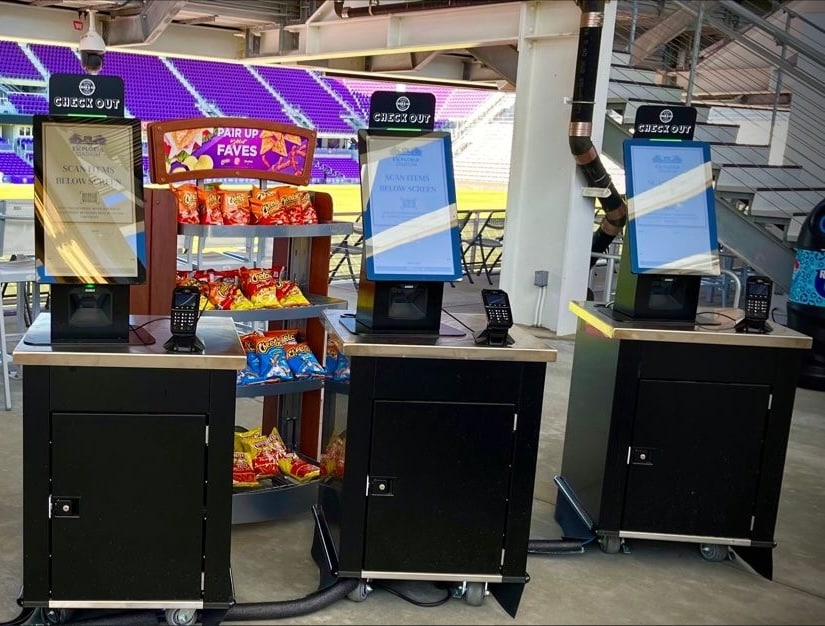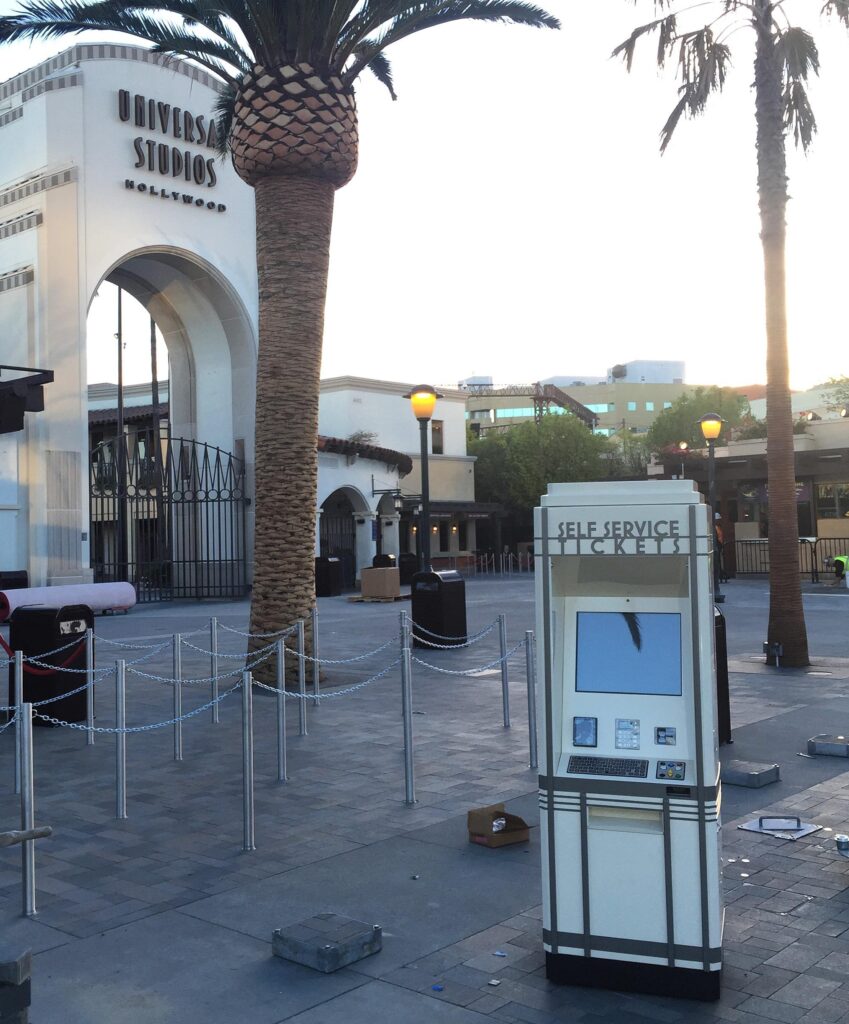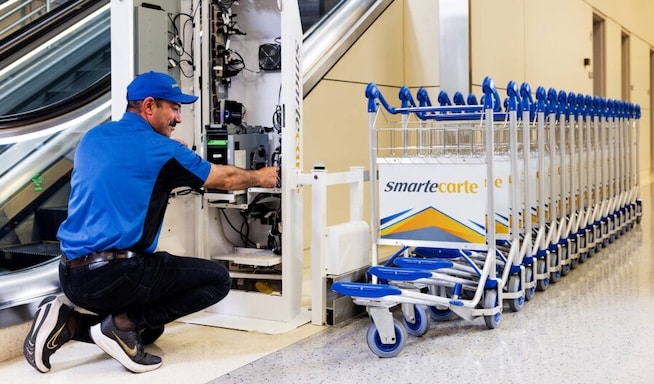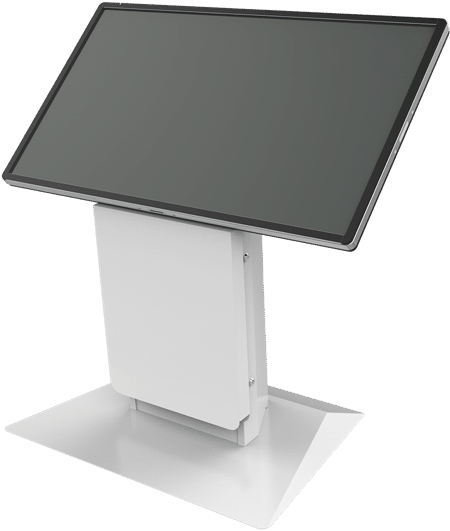When organizations begin planning a kiosk deployment, one of the most common requests we hear is: “Can we get the kiosks faster?” The assumption is understandable. Faster delivery must mean a faster rollout. But the reality is that the pace of manufacturing is rarely the bottleneck.
The real constraint is more often than not site readiness.
And when sites, infrastructure, and internal systems aren’t prepared, faster delivery actually creates more problems than it solves.
This article breaks down what “ready” truly means, why staggered deployment is often unavoidable, and how organizations can set themselves up for the smoothest rollout possible with a kiosk site readiness checklist.
Redefining “Ready for Deployment”
There is a major misconception that once the kiosks arrive on-site, the organization can simply plug them in and go live. In reality, kiosk hardware is just one component of a much larger ecosystem.
Successful deployments require the alignment of:
- Physical site readiness
- Network readiness
- Back-office system integrations
- Content and configuration
- Staff workflows and operational processes
Unless all of these are in place and tested, the kiosks cannot begin serving customers. That’s why the true driver of timeline is upstream preparation, not hardware logistics.
Site Readiness: The Biggest Source of Delays
1. Physical Infrastructure
Before a kiosk can go live, the location must be physically prepared. That often includes:
- Construction or remodeling
- Finalizing placement and clearances
- ADA requirements
- Power in the correct location
- Proper circuit loads
- Network drops or Wi-Fi coverage
Construction delays alone can push deployments back by weeks or months. Even when construction is complete, it’s common for IT and facilities teams to be working through a backlog of other projects.
2. Multi-Site Deployments Require Staggering
For organizations like hospitals, retail chains, amusement parks, stadiums, or QSR brands rolling out kiosks across dozens or hundreds of locations, it’s simply not feasible for internal teams to have every site ready at the same time, nor is that typically the operational plan.
Permitting varies. Remodel timelines vary. Network readiness varies. Internal staffing varies.
A staggered deployment isn’t a sign of inefficiency; it’s normal and expected.
Systems Readiness: The Back-End Work Most People Underestimate
A kiosk doesn’t operate in isolation. It connects to a range of enterprise systems. And those systems must be ready long before the first customer uses the kiosk.
1. Integrations That Need to Be Fully Functional
Depending on the environment, this may include:
- POS platforms or ticketing systems
- Kitchen Display Systems (KDS)
- Order routing or queueing systems
- Payment gateways and EMV certification
- Loyalty, CRM, or account systems
- Inventory and item management tools

If these integrations aren’t correctly configured, certified, and tested, the kiosk simply cannot function in a live environment. You risk negatively impacting the guest experience and you never want to do that.
2. Configuration and Testing
Before deployment, teams must finalize:
- Menu items, pricing, tax, and promotions
- Ticket types or event rules
- Branding and content flows
- API credentials and security rules
- User acceptance testing
Most organizations underestimate how long this alignment takes, especially because multiple departments are involved across IT, operations, finance, compliance, and marketing.
3. Operational Workflow Readiness
Beyond the tech, your people must be ready:
- Staff must know how to monitor, manage, and support kiosks.
- IT must have escalation paths in place.
- Operations must know how to troubleshoot routine issues.
- Support and front-line teams must be trained before the pilot.
Without this groundwork, even a well-built kiosk can fail operationally.
Why Rushing Creates More Problems
Trying to accelerate kiosk delivery before your organization is ready almost always leads to wasted time, cost, and frustration. Here’s why early delivery works against you:
1. Kiosks Sit Idle in Storage
If sites or systems aren’t ready, kiosks end up sitting:
- In storage rooms
- In warehouses
- In unopened crates
Idle hardware is vulnerable to damage, misplacement, and environmental conditions that weren’t intended for electronics.
2. Increased Risk of Lost or Damaged Components
Cables, peripherals, payment devices, and accessories often get separated when equipment arrives early. This causes last-minute scrambling and missing items as teams rush to deploy.
3. Operational and Scheduling Conflicts
When hardware is delivered ahead of readiness, internal teams often feel pressure to “make it work,” resulting in rushed, less-than-ideal installations.
4. The Warranty Clock Starts
This is one of the most important—but least discussed—issues.
Your warranty starts the day the kiosks are received.
Not the day they go live.
If kiosks sit in storage for weeks or months waiting on construction, network setup, or system configuration, you’ve effectively reduced the usable portion of your warranty period. In extreme cases, some organizations lose months of coverage simply because the hardware arrived too early.
5. Financial and Operational Waste
Early delivery leads to:
- Paying rent for storage
- Absorbing unnecessary freight movement
- Needing additional handling and uncrating
- Increased risk of out-of-box surprises on install day
Most are avoidable with proper timeline alignment.
Kiosk Site Readiness Checklist
1. Build a Realistic, Cross-Functional Deployment Plan
Coordinate across construction, IT, operations, and vendor partners. Identify dependencies upfront. Establish a staggered schedule based on true site readiness.
2. Use a Structured Site-Readiness Checklist
This helps ensure consistency across locations and keeps internal teams aligned on expectations. A strong checklist covers:
- Power and network infrastructure
- Construction and placement
- Backend system integrations
- Kiosk content and configuration
- Staff training and operational workflows

3. Pilot, Validate, Then Scale
Starting with a pilot gives organizations the opportunity to validate:
- User experience
- Staff training
- Integration performance
- Operational workflows
This dramatically reduces friction when scaling to additional locations.
How Olea Supports Smoother, More Predictable Deployments
Olea Kiosks partners with organizations well beyond simply shipping hardware. We help by:
- Advising on site preparation and infrastructure requirements
- Helping you coordinate your internal teams
- Providing guidance on placement and ADA compliance
- Supporting pilot phases and rollout planning
- Ensuring hardware aligns with operational goals
Because we’ve supported thousands of deployments across industries, we understand where delays typically occur—and how to prevent them.
The Fastest Deployment Is a Prepared Deployment
Organizations don’t need faster kiosk manufacturing. They need better alignment across sites, infrastructure, systems, and operational readiness. When these elements come together, deployments move quickly, smoothly, and without surprises.
And when they don’t? Even the fastest-made kiosk can sit in storage doing nothing, while the warranty clock ticks away.
Focusing on readiness ensures your investment delivers value on day one and supports a successful, scalable rollout. If you need assistance as you start to plan your investment, contact us today to schedule a consultation.


